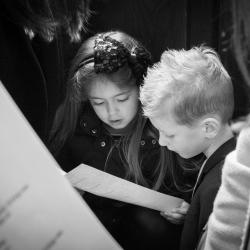Reformed church
Heesbeen, NL
Single-nave, straight-closed church with round-arched windows, 18th century, with remains of a medieval church in tufa stone in the western half; flat tower from the 14th century in brick. Oak pulpit and pew from the 18th century; funeral board from 1764 for Sophia Amalia Maria van Gent, lady of Heesbeen sculpted gravestone for Willem Torck, lord of Heesbeen (died 1557) and his wife Bartha Pieck. The front of an organ by C. van Oeckelen from 1823. The instrument is no longer present. Around the churchyard a brick wall with a gatehouse on the north side, with a saddle roof between gables. Bell frame with chime consisting of a bell by J. van Haer, 1393, diam. 90 cm. and a bell by an anonymous founder, 1393, diam. 85 cm.







